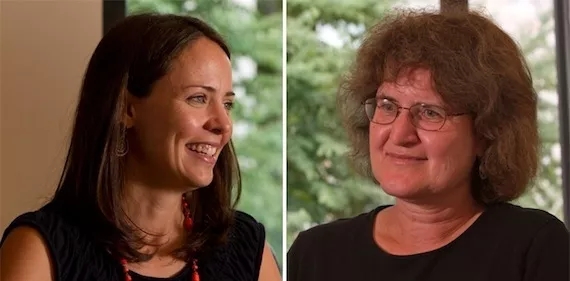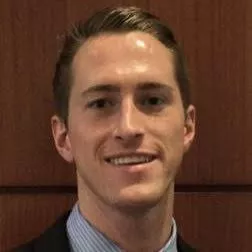Swarthmore Economists Conduct Experiment to Boost Produce Sales At Local Grocery Store

Economists Erin Todd Bronchetti and Ellen Magenheim.
Wearing bright purple aprons and wide smiles, more than 30 Swarthmore students took turns in front of a Chester grocery store passing coupons out to and sharing pleasantries with shoppers.
But this wasn’t just a chance to interact with members of the greater community — it was a test of economic theory. Namely, would giving a three-dollar coupon for fruits and vegetables affect shoppers' decision making differently than giving them a three-dollar coupon to be used on anything in the store?
“Among shoppers who already plan to spend more than three dollars on produce, it shouldn't," says Erin Todd Bronchetti, associate professor of economics. “And if it does, it violates the fungibility of money, which is one of the principles we build economic models on. That was what we were testing from an economic standpoint.”
“We were exploring the idea of whether specifying it as a coupon for fruits and vegetables would put the coupon in a sort of psychological account for produce,” adds Ellen Magenheim, professor of economics.
The magnitude of the result surprised Bronchetti, Magenheim, and their co-author, David Huffman, former assistant professor of economics at Swarthmore. As highlighted by National Public Radio, giving shoppers the coupon for produce led them to spend more total dollars on fresh fruits and vegetables. But giving them the coupon for use on any food in the store did not significantly impact their produce purchases.

"I had many positive interactions and conversations with customers and became friends with members of the staff," says Macrae Wimer '17.
“We did find a rather large difference between the coupons in terms of their impact on the amount of produce people bought,” says Bronchetti. “It was essentially the full three dollars, and I don’t think either one of us expected to see that much mental accounting [in the minds of shoppers] going on.”
Although the researchers caution against reading too much into the experiment, they are giving thought to the bigger picture.
“If a little ‘nudge’ like this can help people follow through on things they intended to do anyway but have a hard time with,” says Magenheim, “there could be a lot of interesting applications of it to public policy.”
This research, “Encouraging Healthy Eating with Behavioral Economics,” is the third in a series of projects by the economists and community partners that seeks to influence individual behavior. The project began when Magenheim read about nonprofit Philabundance getting a grant to start a grocery store in Chester.
“That seemed like an interesting place to do this research, and a great opportunity to explore,” she says. “Philabundance has been very receptive and a great partner, brainstorming plans with us throughout the process.”
Since the Philabundance-run grocery store, Fare & Square, had already been experimenting with incentives to get customers to spend more money on healthful and fresh food, it was a natural fit. To test their idea, the economists put a call out to Swarthmore students.
“Right from the outset, our students were so interested in being involved in the research and in getting involved with this community partner,” says Bronchetti. “It was really fun to see them sign up in big numbers and keep turning out, even when the semester got busy.”
The opportunity to build upon what he was learning about consumer decision-making in class — and to potentially make a difference in the world — enticed Macrae Wimer '17, an economics major from Winnetka, Ill.
“This experiment has implications for how we can incentivize healthy eating habits, which is very important in a country where obesity and its resulting illnesses impact millions of people,” says Wimer, who stood out in front of Fare & Square on crutches after undergoing knee surgery.
“And with the store being in a lower-income area, the customers seemed to really appreciate the coupons we were providing them,” he adds. “I had many positive interactions and conversations with customers and became friends with members of the staff.”
The economists are polishing the research, with the hopes of publishing it. Although they remain careful to not overstate, Bronchetti did allow herself an optimistic interpretation.
“It might just be that for this population of very-low-income households, if you loosen constraints just a little bit, along with a nudge toward certain things, it can make a big difference,” she says. “And that’s an exciting prospect.”



